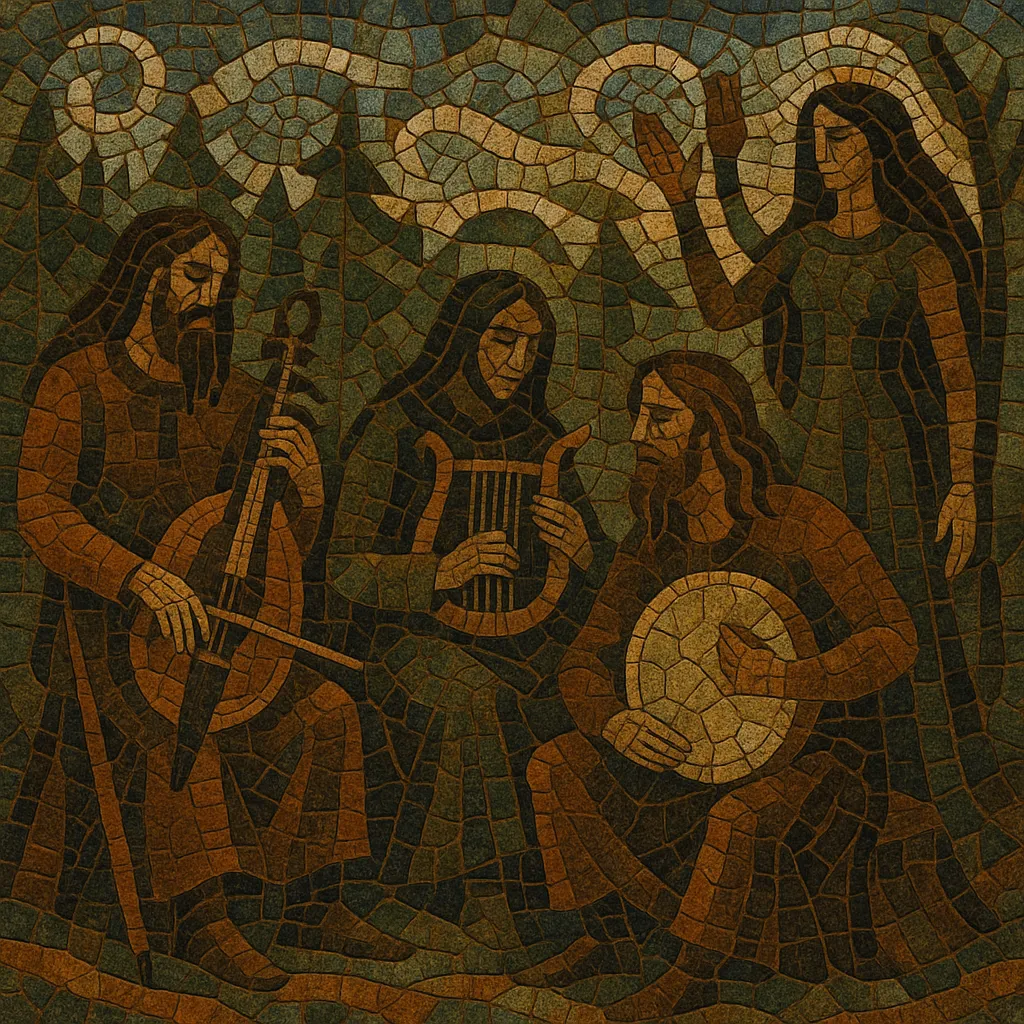Pagan folk is a contemporary, largely acoustic form of folk that draws on pre‑Christian European traditions, mythologies, and ritual practices. It emphasizes hand percussion, drones, chant‑like vocals, and ancient or reconstructed instruments to evoke a timeless, ceremonial atmosphere.
The style blends the modality and storytelling of traditional folk with ambient spaciousness and trance‑inducing repetition. Common timbres include frame drums, hurdy‑gurdy, lyres, tagelharpa, flutes, whistles, jaw harp, and bowed psalteries; vocals often use call‑and‑response, group chants, and archaic languages (Old Norse, Proto‑Germanic, Latin, or invented/reconstructed tongues). While rooted in history, modern production and stage craft (ritual props, body percussion, natural reverb, field recordings) give pagan folk its immersive, “living‑rite” character.
Unlike folk metal, pagan folk generally avoids distorted guitars and drum kits, favoring organic textures, cyclical grooves, and modal drones that suggest procession, invocation, and communal rite.
Pagan folk emerged in the 1990s as part of a broader European revival of interest in pre‑Christian cultures, medieval arts, and living history. Musicians sought to reconnect folk practice with ritual—the circle, the procession, the invocation—using ancient and reconstructed instruments and chant‑based forms.
In the late 1990s, artists in German‑speaking countries, the Low Countries, and France began shaping a distinct acoustic counterpart to pagan/folk metal and dark/neofolk. Early, influential acts and adjacent projects included Stille Volk (France), Hagalaz’ Runedance (Norway/Germany), Omnia (Netherlands), and Faun (Germany). These artists emphasized acoustic timbres, drones, frame drums, modal melodies, and mythic themes.
Festivals and gatherings—medieval fairs, living‑history events, and dark‑wave/goth festivals (e.g., Wave‑Gotik‑Treffen in Leipzig) and later Castlefest (Netherlands)—nurtured the genre, providing audiences attuned to ritual performance and historical instrumentation.
The 2010s brought worldwide visibility through artists such as Wardruna (Norway), Heilung (multi‑national), and SKÁLD (France), whose recordings and striking live rituals resonated beyond folk scenes. Television and game soundtracks featuring Norse and Celtic settings helped mainstream the sound, while streaming platforms propelled “Viking/pagan” playlists.
The result is a broad ecosystem: minimalist ritual ensembles, ambient‑leaning projects, and more theatrical troupes. While aesthetics vary—from intimate acoustic circles to percussive, trance‑like spectacles—the shared core remains mythic storytelling, modal melody, and communal, ceremonial pulse.


